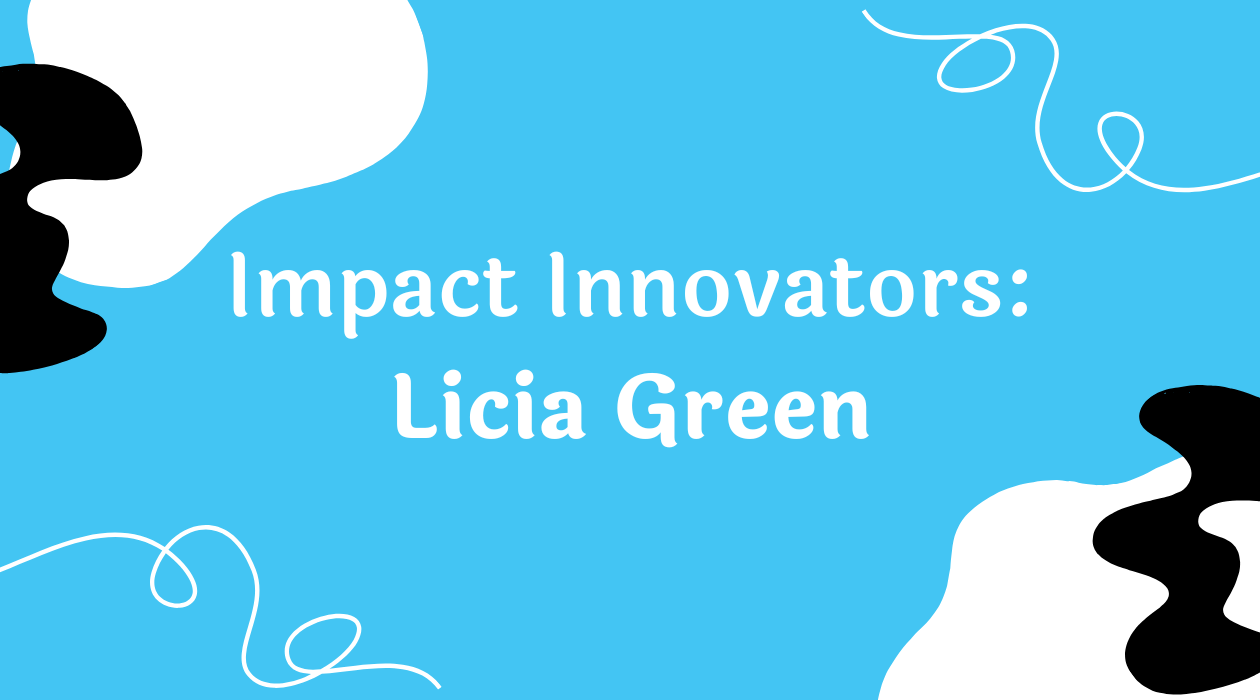From volunteer to Executive Director, Michael Centeno’s journey with Tia Chucha’s is a testament to...

Licia Green on Family Advocacy, Collaborative Fundraising, and Human-Centered Development
From classroom educator to executive development leader, Licia Green has spent the last 16 years transforming personal experience into professional impact for children with hearing loss and their families.
A Parent First, Then a Leader
Licia Green didn’t plan to build a career in nonprofit development. She was a school teacher and a mother to twin daughters who were both born deaf. When she first came to Children's Choice for Hearing and Talking (CCHAT) as a parent seeking services for her children, she had no idea she’d one day lead the fundraising work that keeps the program running.
After a decade in the classroom, Licia joined CCHAT as an instructional aide, then transitioned to teaching. But her connection to the mission and firsthand knowledge of its life-changing impact soon opened another door. She was asked to take on the development role—solo.
She accepted, believing in the program and the power of her own story. “I could speak positively about the impact because I lived it,” she says. The technical skills came later, through mentors, trial-and-error, and a willingness to keep learning.
Building Development from the Ground Up
For the first 10 years, Licia led development efforts by herself. She learned grants, event planning, donor stewardship, and community education—all while continuing to center families like her own.
She found camaraderie and learning through a national network of similar schools and a pivotal local opportunity: Sacramento’s Big Day of Giving, hosted by the Sacramento Region Community Foundation. Through trainings and resources, it became more than an annual event—it became a tool for year-round engagement.
About five years ago, she reached her bandwidth limit. That’s when Licia approached CCHAT’s Board and Executive Leadership to advocate for growing her team. The additional capacity strengthened their expertise in grant writing, storytelling, data tracking, and program visibility.
“We were very event-heavy,” Licia notes. “But events are transactional by nature.” With a small donor base, limited staff, and families already stretched thin, she began shifting focus toward more sustainable, relational models of giving.
Navigating Constraints with Creativity
CCHAT serves 50–60 children a year—small in scale, enormous in impact. But that scale means the traditional donor pipeline is narrow. Many families give all they can just to participate in the program, often shifting from dual to single incomes to make it work.
So Licia and her team get creative. They diversify events to meet different audiences: a fall bike-a-thon to engage families and a more traditional gala to attract new donors. They opt out of Giving Tuesday in favor of their own year-end mail appeal. And through it all, they use storytelling and community education to extend their reach beyond those directly served.
Making Fundraising More Human
Relationships, Licia says, are at the heart of everything. “Every donor, every person should walk away from an event or an encounter with us feeling seen, valued, and good.”
She shares that even after a decade of Big Day of Giving, some donors still report never receiving a thank you from participating organizations. That’s why she insists on signed notes, personal outreach—even when the gift is modest.
Their team tracks data, yes, but always pairs it with stories. Their annual impact report combines hard metrics with heartfelt testimonials. “Donors want to know they’re part of something bigger,” she says. “And we want to show them that they are.”
Insights for the Sector
Licia sees how structural barriers get in the way of growth—not just at her organization, but across the field. Among them:
- A need to build greater understanding among board members about the fundraising process
- The potential to provide more accessible education on board roles and fundraising strategy
- Limited understanding by funders of the need for unrestricted gifts
- The scarcity mindset that keeps nonprofits in silos instead of in partnership
She praises the Sacramento Region Community Foundation for fostering collaboration among 800+ nonprofits each year. “Big Day of Giving shows what’s possible when we work together instead of competing.”
She also emphasizes the need for stronger pipelines into board service—where learning and development are part of the experience, not afterthoughts.
Final Reflection
Licia’s journey is a testament to what’s possible when lived experience and professional mission intersect. From a parent navigating the unknown to a leader stewarding half a million dollars in annual fundraising, she has shaped a development program grounded in humanity, creativity, and resilience. Her story reminds us that nonprofit success isn’t just about revenue—it’s about relationships, relevance, and real-life impact.
Want more stories like this?
The Impact Innovators series features real nonprofit leaders sharing what works, what doesn't, and what’s next. No fluff. Just honest stories for people building a better world. Subscribe or share to support this growing conversation.
- Read our latest blog post "Shameka Beaugard on Data Equity, Community Trust, and Reimagining Engagement" here.
- Want to hear more about our work? Subscribe to our newsletter here!




-2.svg)